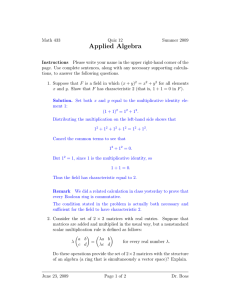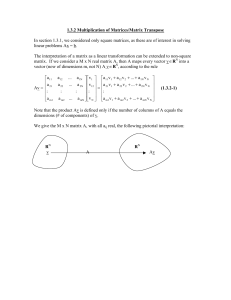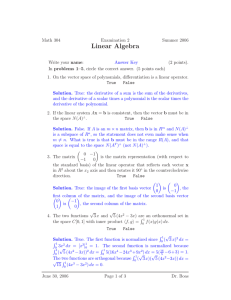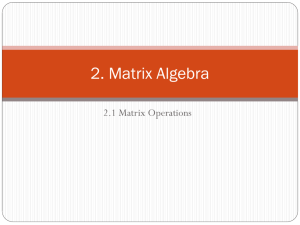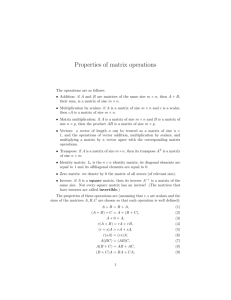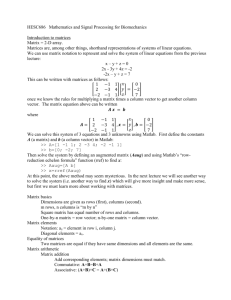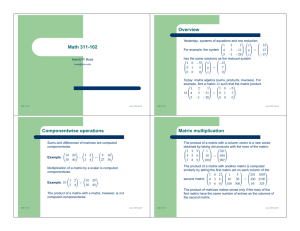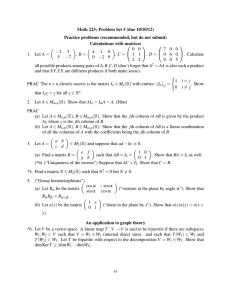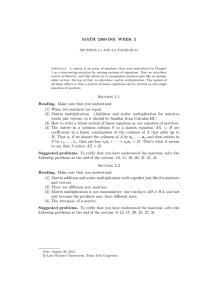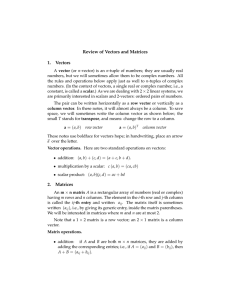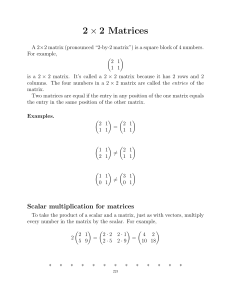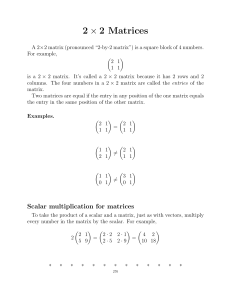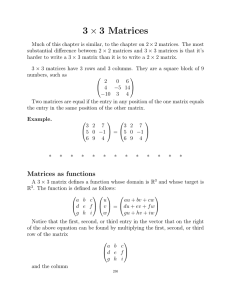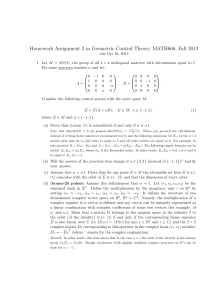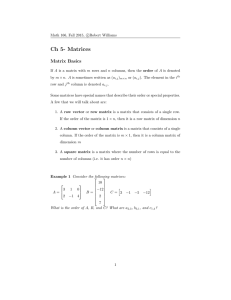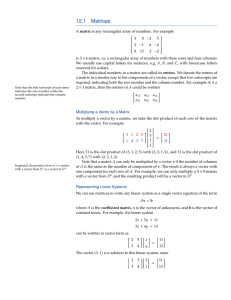Recap of last time Math 304
advertisement
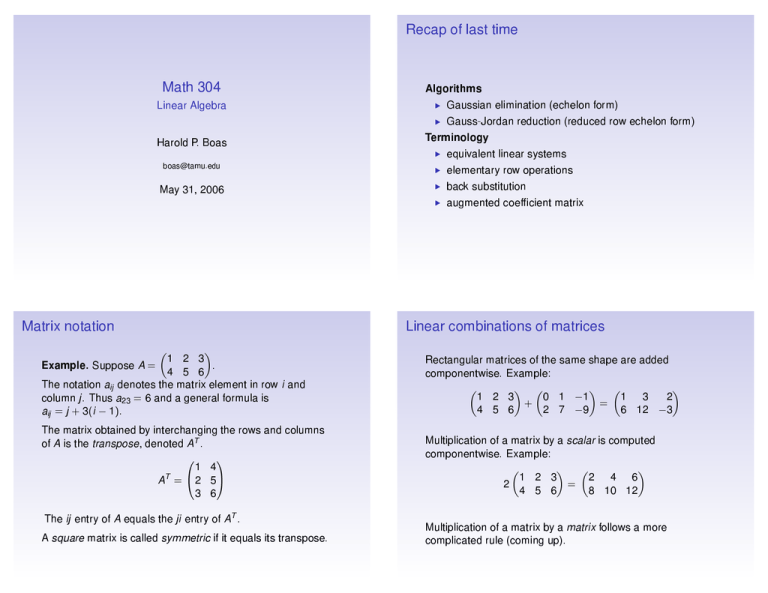
Recap of last time Math 304 Linear Algebra Harold P. Boas boas@tamu.edu May 31, 2006 Matrix notation Algorithms I Gaussian elimination (echelon form) I Gauss-Jordan reduction (reduced row echelon form) Terminology I I I I equivalent linear systems elementary row operations back substitution augmented coefcient matrix Linear combinations of matrices 1 2 3 Example. Suppose A = . 4 5 6 The notation aij denotes the matrix element in row i and column j. Thus a23 = 6 and a general formula is aij = j + 3(i 1). The matrix obtained by interchanging the rows and columns of A is the transpose, denoted AT . 0 1 1 4 AT = @2 5A 3 6 The ij entry of A equals the ji entry of AT . A square matrix is called symmetric if it equals its transpose. Rectangular matrices of the same shape are added componentwise. Example: 1 2 3 4 5 6 + 0 1 2 7 1 9 = 1 3 6 12 2 3 Multiplication of a matrix by a scalar is computed componentwise. Example: 1 2 3 2 4 5 6 = 2 4 6 8 10 12 Multiplication of a matrix by a matrix follows a more complicated rule (coming up). Interpreting a linear system as a vector equation Product of a matrix and a vector We can rewrite the example from yesterday x1 as: x1 x2 + x3 = 9 2x1 + 3x2 + 10x3 = 3 3x1 = 5 5x2 16x3 0 1 0 1 0 1 1 @ 2A + x @ 3A + x @ 2 3 We dene the product of a matrix and a vector in order to make 1 0 1 1 9 A @ 10 = 3A. 3 5 16 5 Solving 0 1 the linear system amounts to writing the column vector 9 @ 3A as a linear combination of the three column vectors 0 51 0 1 0 1 1 1 1 @ 2A, @ 3A, and @ 10A. [See Theorem 1.3.1, page 37.] 3 5 16 x1 1 0 0 1 0 1 0 1 1 @ 2A + x @ 3A + x @ 2 3 1 1 A @ 2 10 = 3 16 3 5 Example. 0 1 0 1 1 2 17+28 @3 4A 7 = @3 7 + 4 8A 8 5 6 57+68 10 1 x1 1 A @ x2 A : 10 x3 16 1 3 5 0 1 23 @ = 53A : 83 Identity and inverse Product of matrices The additive identity matrix has all entries equal to 0. We dene the product of matrices to make the rst matrix act independently oneach column of the second matrix. 1 2 5 17 1 2 7 23 Example. = and = ; 3 4 8 53 3 4 6 39 1 2 5 7 17 23 = : so 3 4 6 8 39 53 Warning! Matrix multiplication is not commutative. 5 7 6 8 which is different from 1 2 3 4 1 2 3 4 = 26 38 30 44 5 7 . 6 8 The multiplicative identity matrix I has entries equal to 0 except for the main diagonal, which has entries equal to 1. Example: 0 1 @0 10 1 0 1 0 1 0 1 0 0 a 1 @bA = a @0A + b @1A + c @0A 0 0 1 0A 0 0 1 c 1 0 0 01 a @ = bA : c Two matrices are multiplicative inverses if their product (in either order) is the multiplicative identity matrix. Example: 7 3 2 1 1 2 3 7 = 1 0 0 1 = 1 2 3 7 7 3 2 1 : A matrix is singular if it does not have a multiplicative inverse.

